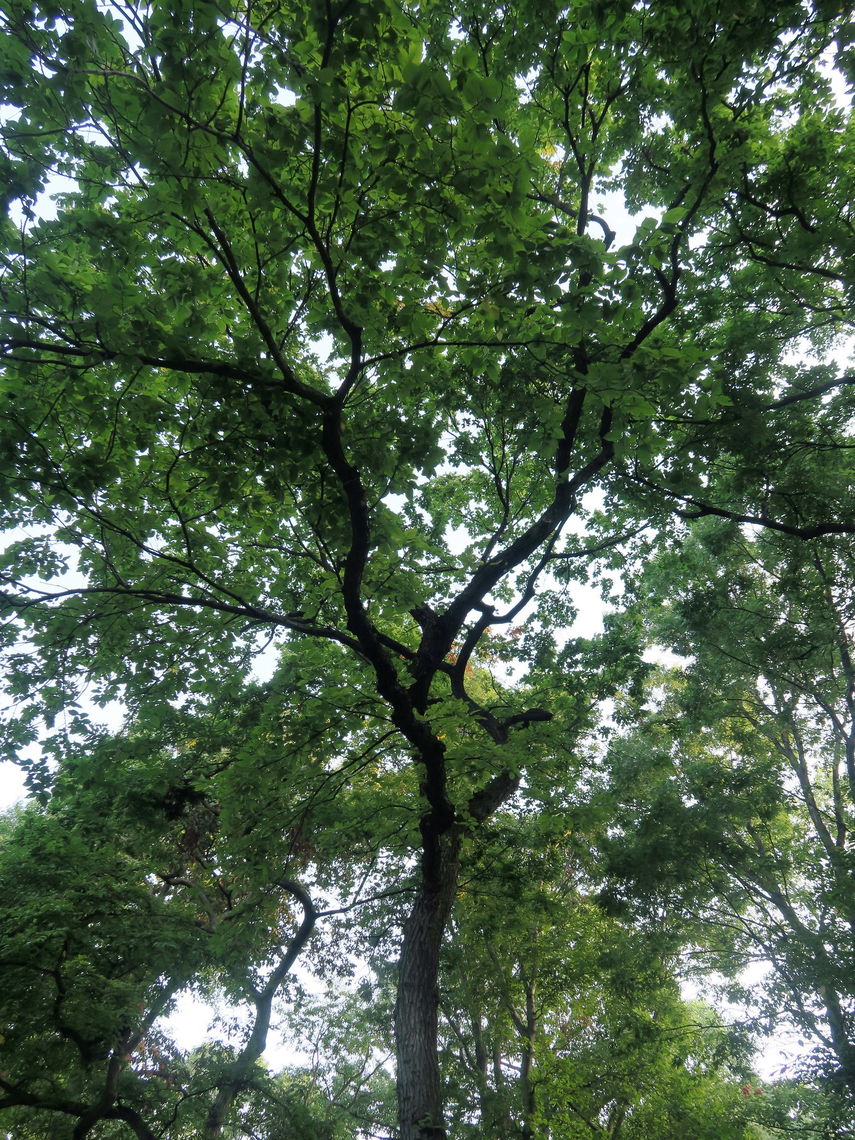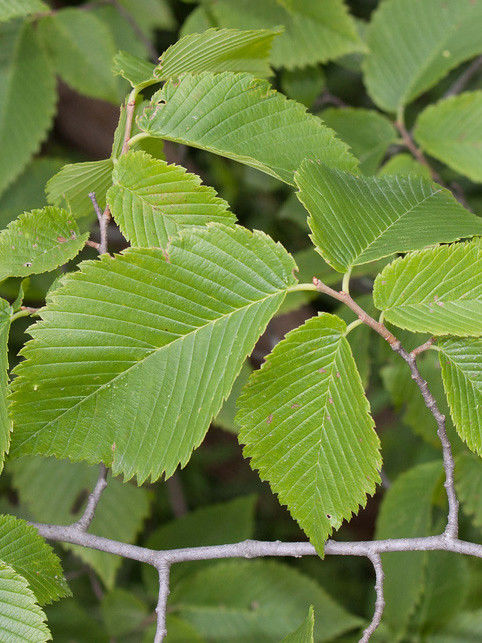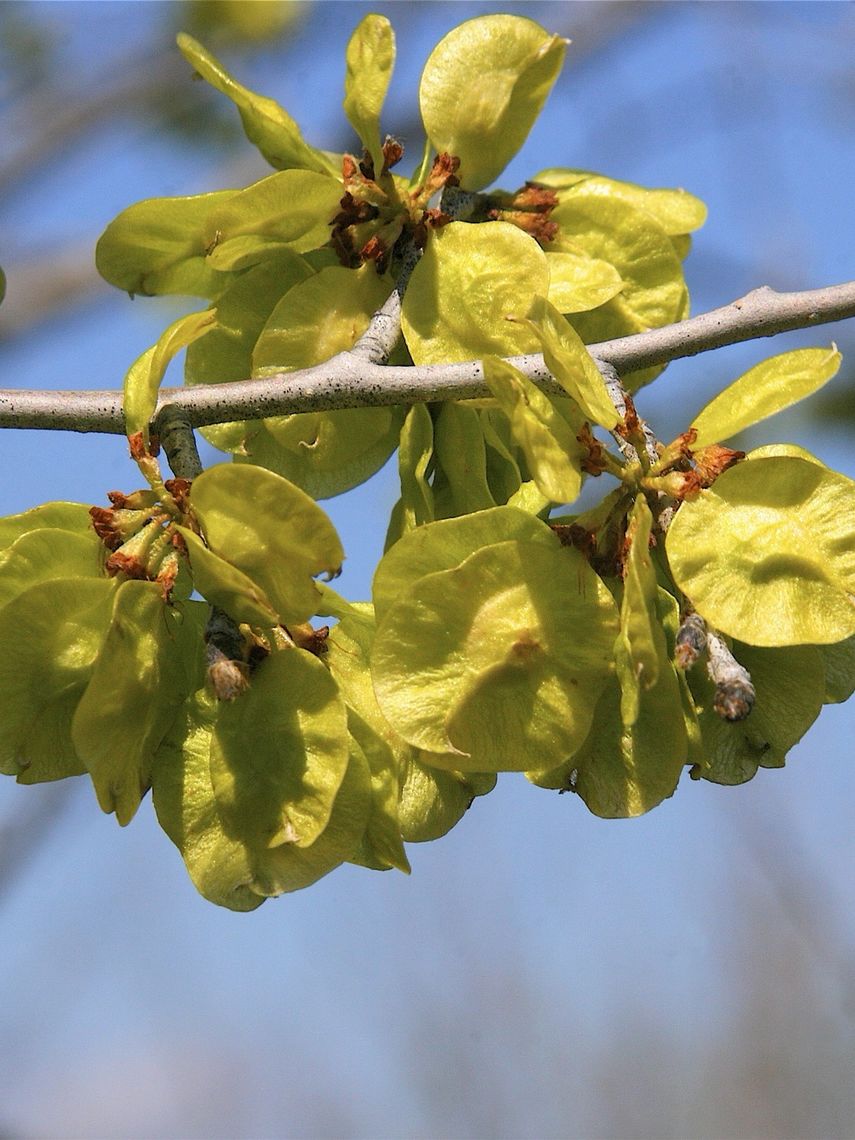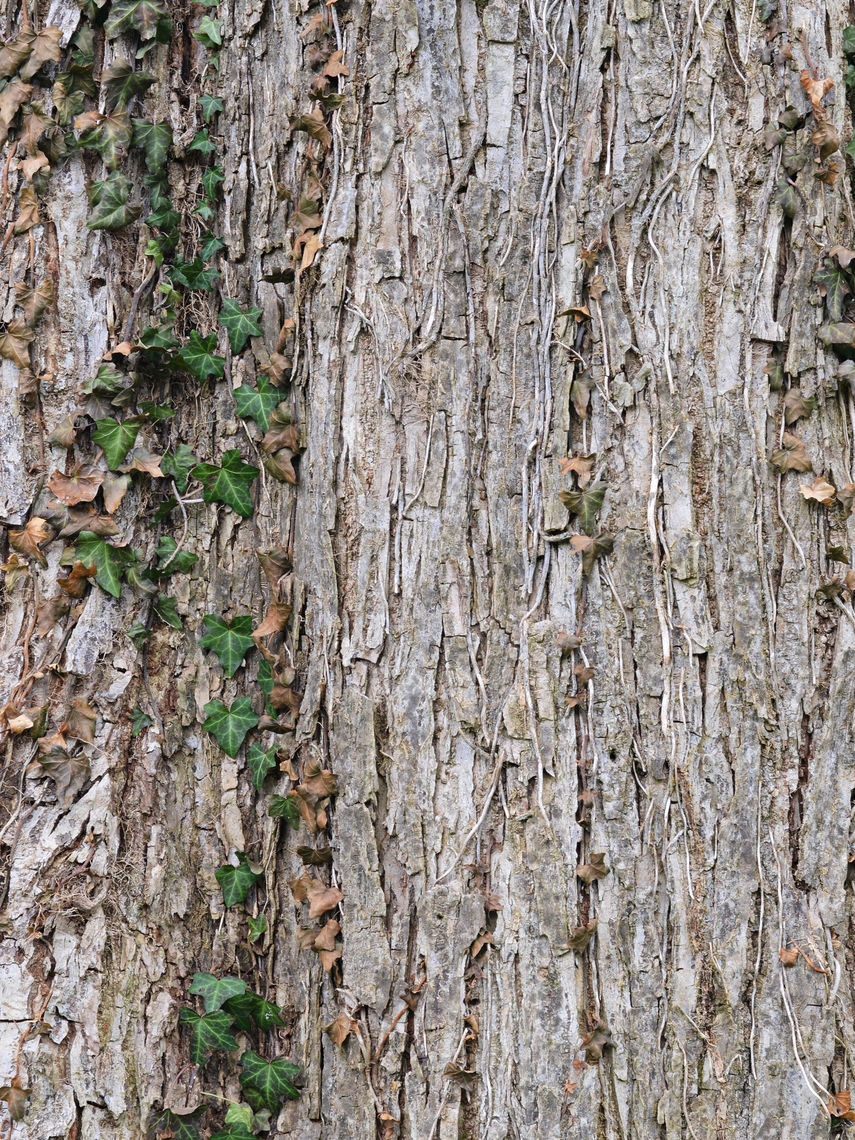Slippery Elm (Ulmus rubra)
The slippery elm is a medium sized tree with oval-pointed, toothed leaves. Its common name refers to the tree's slimy, slippery, and red inner bark. The slippery elm is distinguishable from other elms by its downy twigs and fuzzy red buds. This tree attracts birds and small mammals.
Family: Ulmaceae (Elm)
Characteristics: The 4-inch to 6-inch-long dark green leaves are toothed, have an oval-pointed shape, and have a sandpaper-like texture. From the center vein, one side of the leaf is shorter than the other. In the fall, leaves turn yellow. Elm trees produce samaras (double winged seeds). Bark is gray, ridged, and furrowed. Inner bark is red and slimy. This tree is vase-shaped and has a broad and rounded crown, with downy twigs and fuzzy red buds. It grows 40-60 feet high and 30-50 feet wide.
Foliage: Deciduous (leaves lost seasonally)
Geographic Origin: Central and Southern United States (native)
Cultivation Notes: Requires medium maintenance. Does best in full sun, though can tolerate full shade. Prefers moist and well drained soils. This tree is very susceptible to Dutch elm disease.
Number on Campus: 1
Sources: Dirr, Morton Arboretum, Missouri Botanical Garden




